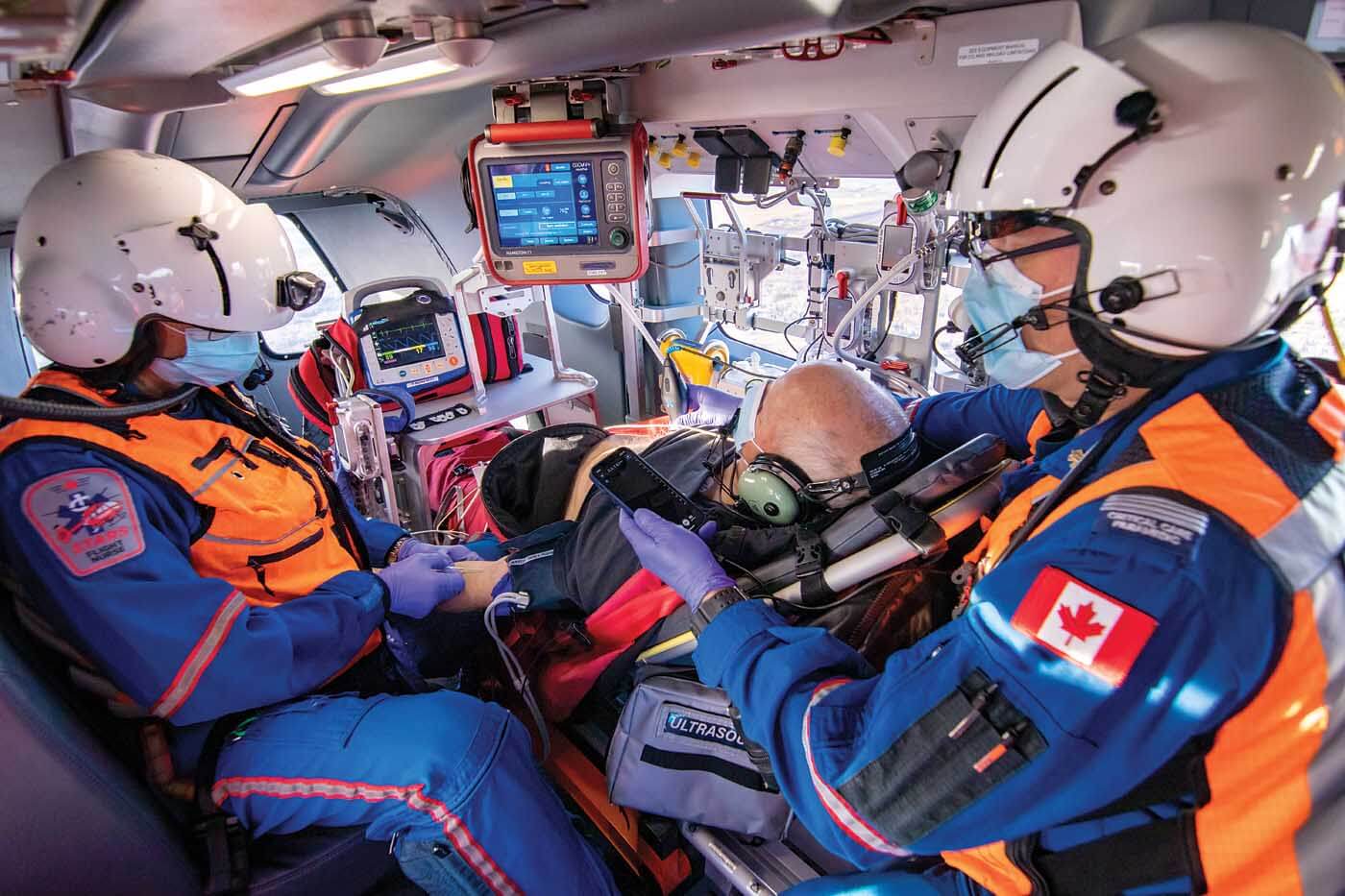Several forces are molding how helicopter emergency medical services (HEMS) operate today, especially in North America, driving HEMS operator investment decisions when it comes to medical interiors.
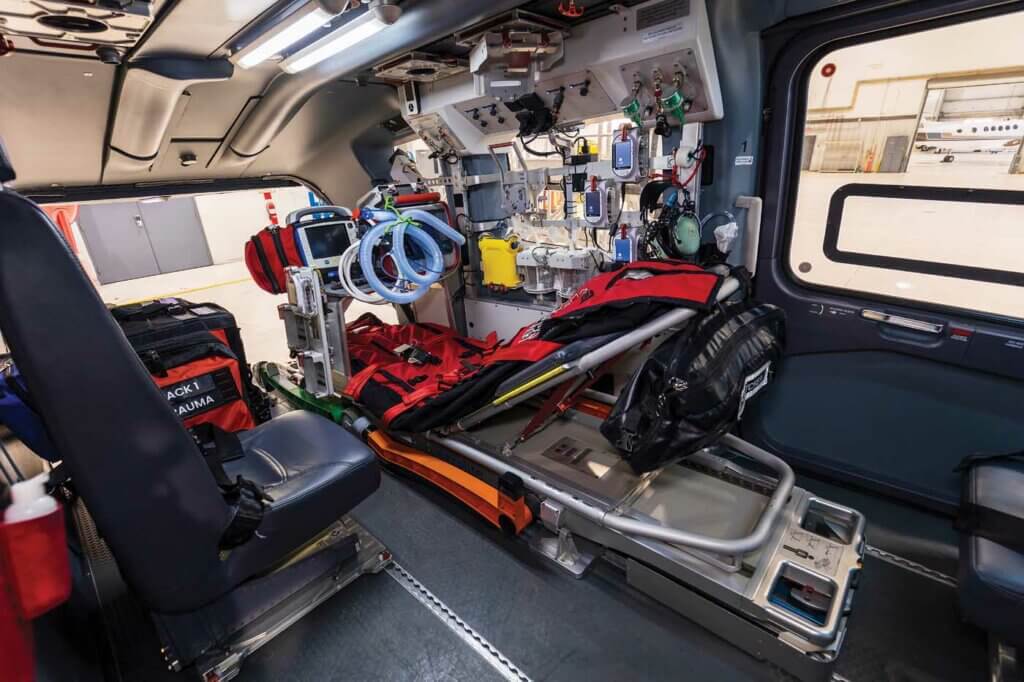
The first and perhaps most profound force is a prohibition on balance billing. With HEMS operators unable to recoup costs beyond government program and insurance reimbursement limits, and exceptionally low reimbursement rates from government programs, including Medicare and Medicaid, companies are forced to take significant cost-saving measures.
“That has really constrained the HEMS market in terms of where investment is going and the aircraft fielded,” said Tim Wickersham, special missions account manager for LifePort. “Companies are focusing more on lifecycle extensions of their aircraft and equipment. How can they take this profit center, the aircraft, and get every penny possible out of it because they can no longer bill these large sums? They’re not going to get reimbursed from the government for them so they must reduce costs.”
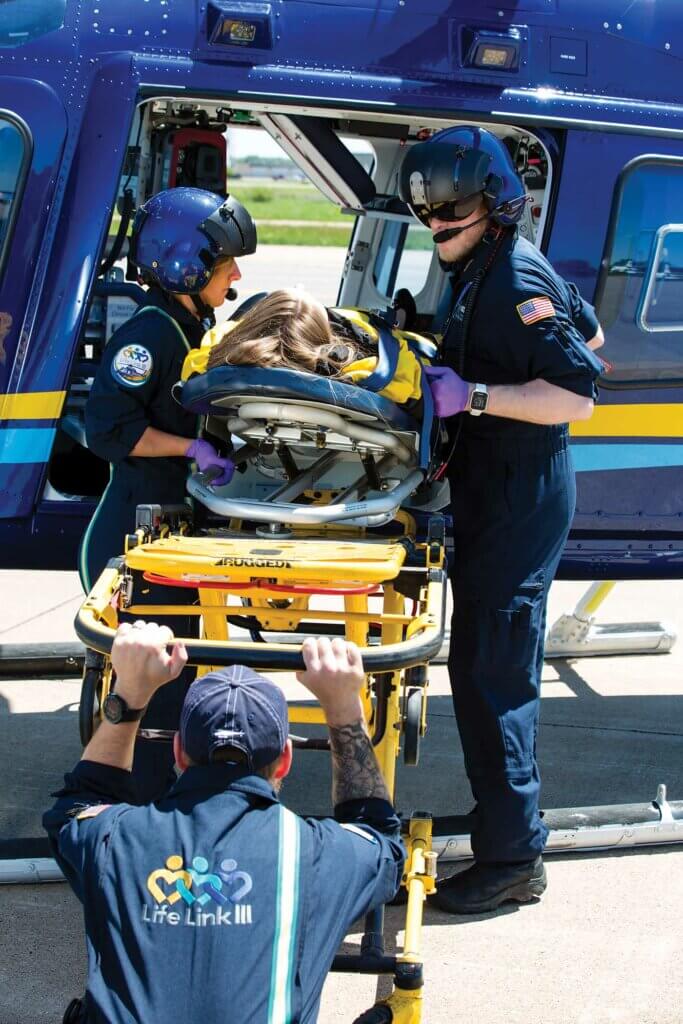
Another force making a significant impact is pressure to optimize aircraft weight to increase operational efficiency. As more HEMS operators travel deeper into rural areas, the demand for extended range capabilities further puts pressure on medical interior providers to design lighter interior solutions.
Additionally, the U.S. adult obesity rate has increased more than 26 percent since 2008 to 42.9 percent of the adult population, the highest in the world. As more and more bariatric patients require medical airlift, HEMS operators must be prepared with both equipment that can support their size and weight and leave enough wiggle room in the aircraft’s maximum takeoff weight to safely perform a flight.
Meeting the challenge
Medical interior companies are approaching these headwinds with lighter, stronger materials and modular options. By designing interior components and equipment with lighter materials that last longer and finding ways for components to do more with less, medical interior designers are shaving pounds and saving dollars.
A prime example is Aerolite’s lightweight blood floor. In response to a customer requirement to reduce weight, Aerolite designed a blood floor that weighed 20 percent of the weight of typical milled aluminum alternatives. The company completely redesigned the industry-standard product by identifying materials and processes that reduced weight without sacrificing durability and function.

“We identified a heavy-duty synthetic material often used in aircraft galley floors, which is tough and made for daily wear and tear,” said Hans Bretscher, vice president and general manager of Aerolite America, Aerolite’s subsidiary in Fort Mill, South Carolina.
Engineers combined the material with a composite core and integrated the original seat tracks, resulting in a lighter, yet just as tough and functionable, option.
After experiencing the weight reduction value and strength of composites, Aerolite acquired a composites firm in 2020, allowing it more flexibility to cost-effectively design and manufacture medical interiors using lighter materials, including honeycomb panels and carbon fiber components.
In all, through use of composite technology, Aerolite’s modular interiors now weigh hundreds of pounds less. These interiors have grown in popularity in Europe over the years and now the company has begun to build popularity in the U.S. with several recent orders.

Spectrum Aeromed maintains lightweight aluminum is ideal for their interiors and products. Matthew Christenson, vice president and account executive at Spectrum Aeromed, emphasized composites can certainly lighten the interior, in some cases.
“We’re designing composite cabinets and valances and aiming to use composite where it’s applicable, but just because you’re using composite material doesn’t guarantee it’s going to be lighter,” he explained. “It all depends on what your application is and what your goal is. Sometimes you must add a lot of structure or inlay material into a composite to ensure it holds a heavier weight. We have found that lightweight aluminum can better handle patient weight and other requirements for our applications. We can dress up an interior and make it look very sleek and high end by adding in the composite cabinetry, ceiling valances, and such where composites give a nice form and fit.”
The Bucher Group in Switzerland is also focusing on decreasing weight through the use of lightweight materials and smart engineering without compromising safety.
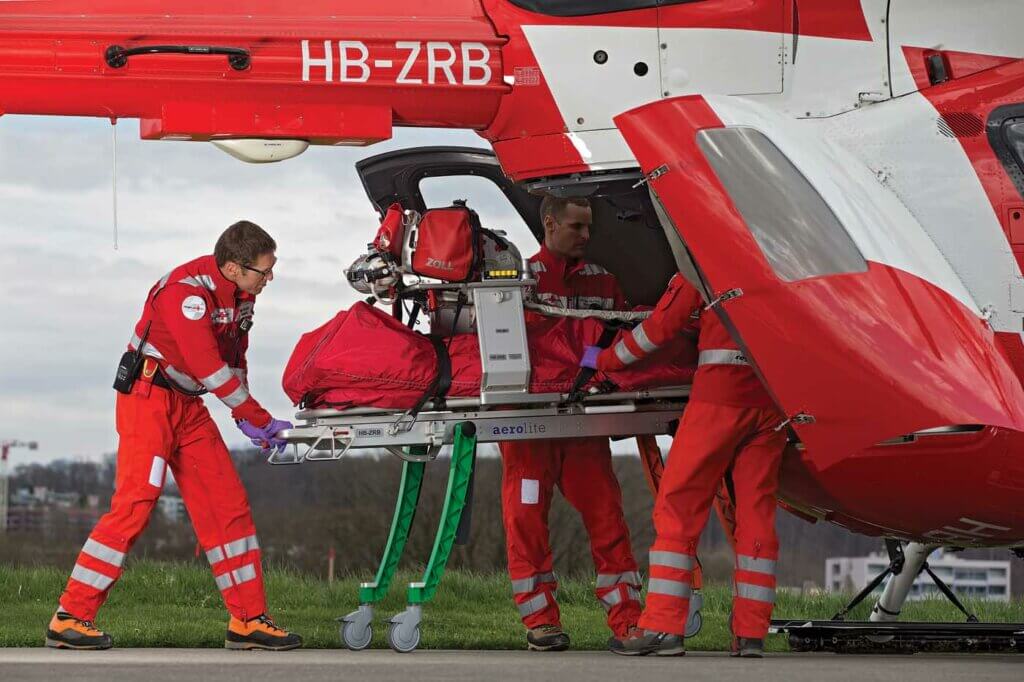
“Nevertheless, it’s worth highlighting the robustness, which, given the demanding operational conditions faced by HEMS crews, can at times take precedence over the need for lightweight design,” said Sonia Booz, marketing manager at the Bucher Group in Switzerland.
Companies are also addressing weight issues by creating more modular interiors. LifePort’s modular interiors, for example, have been able to reduce weight by a typical 30 to 80 pounds (14 to 36 kilograms), depending on the aircraft and configuration.
“By making the system more modular, such as focusing on carry-on medical devices instead of integrated systems in the aircraft, we reduce weight and costs in integration and maintenance,” LifePort’s Wickersham said. “We are also looking at trying to incorporate lighter and stronger components and control costs. We have been working with our suppliers on long-term agreements and looking at better ways to purchase materials and make sure the components that we’re purchasing are going to be procurable in five years.”
LifePort is also working with current customers to field existing systems and provide updates that reduce their weight, he said.
Some medical interior manufacturers are also offering wider stretchers capable of carrying more weight that are easier to load, saving caregivers from injury caused by lifting increasingly heavier patients.
Aerolite’s stretcher, for example, is designed for the H145. It’s rated for 880 lb. (400 kg) and measures 23.65 inches (60 centimeters) wide by 74.8 in (190 cm). The company also designed a side-loading option for these stretchers, making it easier on caregivers to load heavier patients, Bretscher explained.
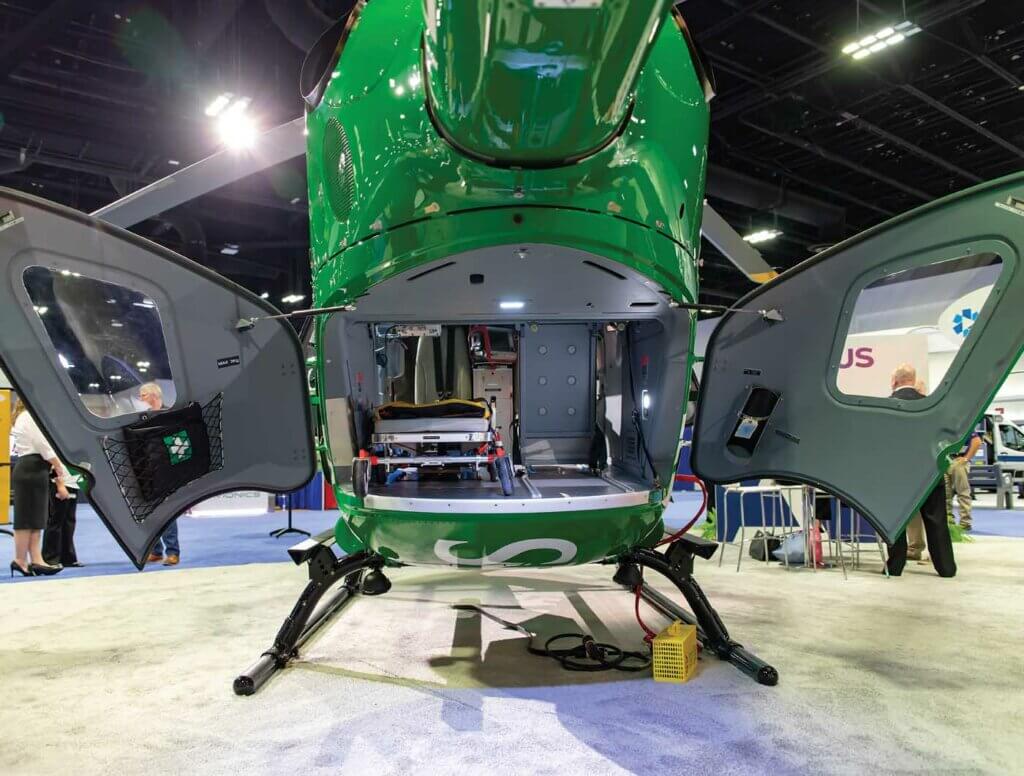
Comfort and care
Booz has also seen an increase in requests for items that came from lessons learned from Covid-19.
“Lessons learned during this crisis have influenced new requests and requirements within HEMS interiors,” Booz said. “Enhanced infection control measures, such as antimicrobial materials, easy-to-clean surfaces, and improved ventilation systems, have gained prominence in response to the heightened focus on health and safety.”
She is also seeing increased demand for patient comfort, which includes larger stretchers, but goes beyond that one modification.
“Interiors are being designed with features that provide better patient care, such as advanced medical equipment integration, ergonomic seating, and noise reduction technologies, to ensure a smoother patient experience,” she said. “Bucher introduced new materials and surfaces that enhance infection control within HEMS interiors in response, and offers modular designs that enhance interior flexibility and adaptability.”
Size matters
As medical equipment matures and new versions hit the market, often their manufacturers are delivering on customer needs for lighter and smaller options. When this happens, modifications to medical interiors are required to integrate the upgraded equipment. The process used to be a simple update, but even that has changed.
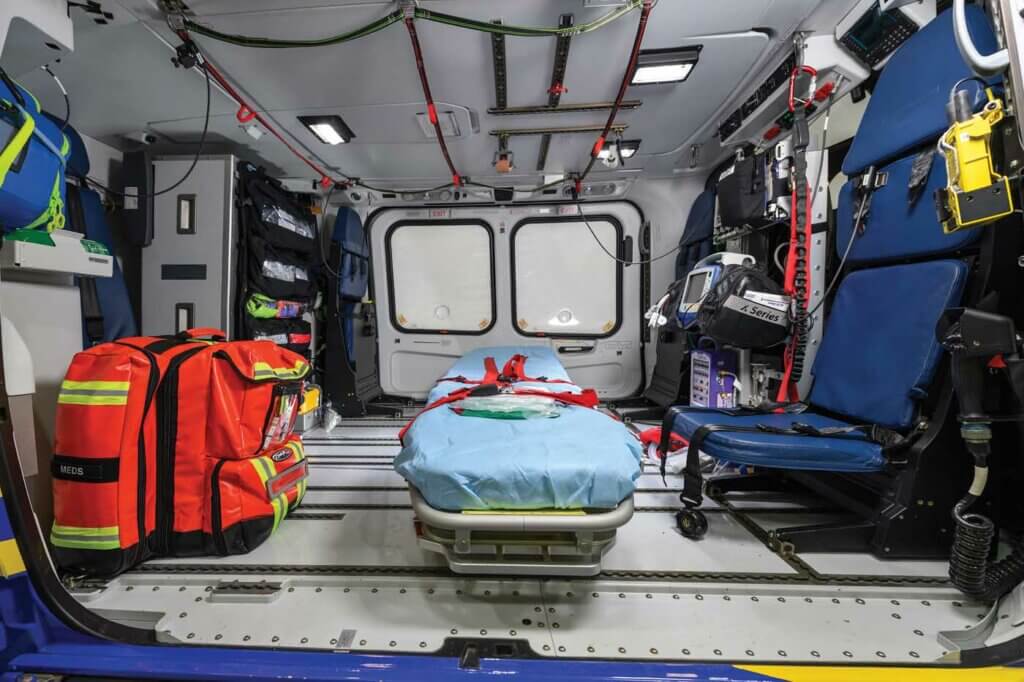
“The medical device mounts need to be incorporated into the aircraft STC [supplemental type certificate],” Wickersham said. “It used to be that you could do a field approval when you needed to change the mount and add different pieces of equipment. The FAA [Federal Aviation Administration] is really moving away from that and requiring operators to, when possible, incorporate these mount designs into the STC.”
Wickersham said that adds another level of complexity into the entire certification because “now we’re having to think through provisions for these devices when operators are keeping aircraft for 10 to 15 years while medical equipment changes every five to seven years. How do we make sure they’re future proofed so when a piece of equipment changes and center of gravity changes a bit, the operator can still install the updated equipment? As a manufacturer, we have to make sure we’re thinking forward to the entire lifecycle of the airframe during design, engineering, and certification of mounts.”
Christenson sees the reduction of medical equipment size as an opportunity to do more. For instance, Spectrum Aeromed sees more equipment in neonatal transport than in the past because of smaller, lighter devices, requiring updated equipment and mounts. As a result, the company’s neonatal transports have evolved to include more equipment, allowing aircraft to transport neonatal patients in even more critical states than before.
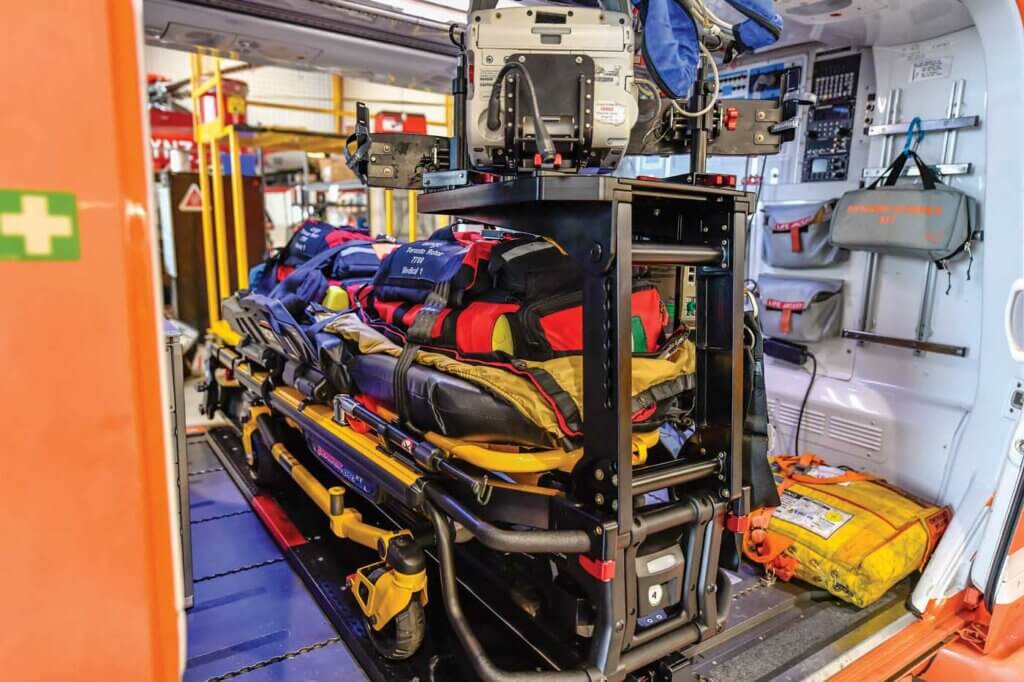
As HEMS operators expand into more rural areas, they are operating longer range aircraft. More range means a need for equipment and oxygen that can work longer in flight in addition to the need for weight savings.
A key example is liquid oxygen, referred to as LOX. A very U.S.-based trend, LOX systems include liquid oxygen delivery systems that can operate longer than portable oxygen tanks. Christenson sees LOX being requested more often by longer range operators, which requires medical interior companies to integrate it as cost effectively as possible.
Consolidation and competition
Consolidation of the industry continues, especially in the U.S. where five large HEMS operators represent the vast majority of the industry. While this has led to a reduced number of customers for medical interior companies, it has increased the number of helicopters providing air medical service globally.
“We have noticed those who are consolidating expanding their coverage area,” Christenson said. “While there may be less operators, there are just as many if not more aircraft being utilized to cover a service area. The reach of these operators is definitely increasing and they’re developing a better presence in some of the more remote areas, partly because they are larger companies and can afford to expand where smaller companies may have struggled. We’re seeing this globally, not just in the U.S.”
HEMS operator numbers may be shrinking, but that’s where consolidation ends. Each operator must meet the specifications and requirements of their medical customers, which can call for a fleet of entirely different aircraft with different medical interior needs.
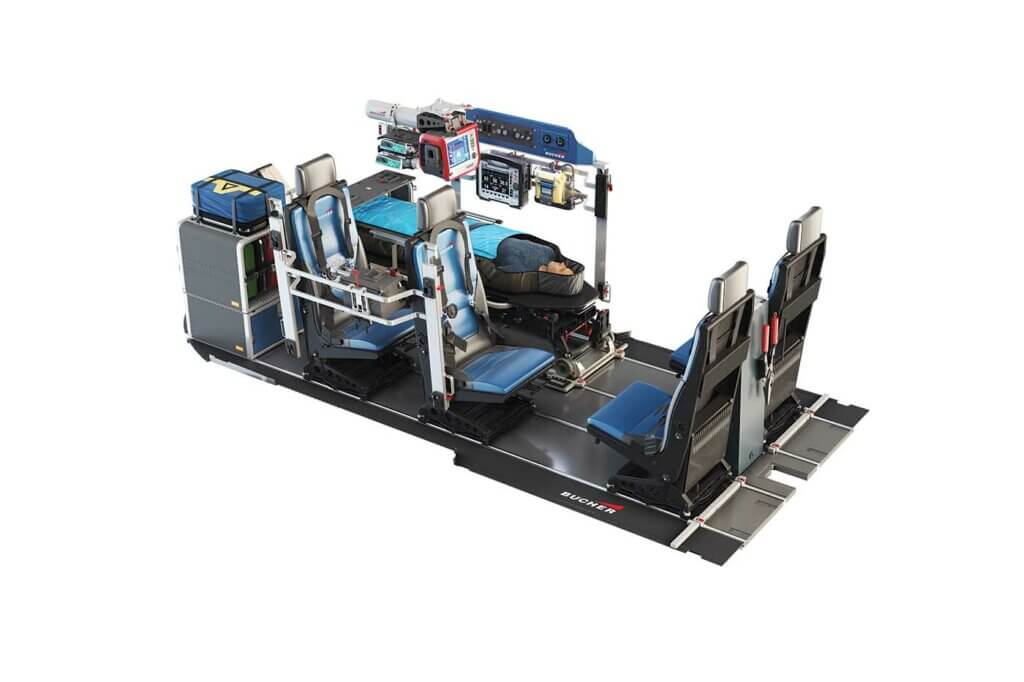
For instance, one medical customer may require specific equipment that is portable to go from the hospital to the helicopter and back for seamless critical care support while another customer may require a helicopter more capable of long-distance transports that include neonatal and bariatric transport.
As the HEMS industry continues to grow, and the equipment available to it evolves, one thing remains constant. No one-size-fits-all approach will do. By working directly with each customer, HEMS medical interior providers have been able to expand their capabilities and offerings in ways that help every HEMS operator.
“While HEMS trends may vary across regions, a commitment to global insights and innovations ensures that products are informed by trends worldwide,” Booz said. “This cross-regional approach helps strengthen products in North America by integrating best practices and solutions from around the world, fostering a comprehensive and adaptive approach to HEMS interiors. That’s why we need to be open to tailor-made customer solutions based on specific needs, with no one-size-fits-all approach.”





